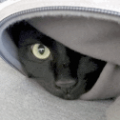G8JNJ
About
- Username
- G8JNJ
- Joined
- Visits
- 4,628
- Last Active
- Roles
- Member
- Points
- 127
Reactions
-
rx.linkfanel.net receiver map moving to Leaflet
Hi Pierre & John,
Thanks for doing this, it's much appreciated.
I find the S/N map and rating list extremely useful, especially when trying to optimise my own KiWi's and also when trying to find KiWi's that are suitable for TDoA purposes. In fact it would be really useful if the TDoA Kiwi selection map could somehow indicate the S/N ratings of each in order to make the selection process quicker by ruling out KiWi's with really bad (unusable) S/N values.
I'm not sure how frequently the S/N values on http://rx.linkfanel.net/snr.html are updated, but maybe an 'average' and 'recent' display would be worthwhile additions ?
I must admit I'm biased about this as I believe that across the whole 0 - 32MHz spectrum, my KiWi http://southwest.ddns.net:8073/ is probably in the top 3 worldwide, although it's currently sitting at number 23 on the list with a S/N of 31.72 dB.
However when I have actually examined the spectrum display or performed an 'auto scale' test with the spectrum fully zoomed out I get better results (currently auto scaled as -22 to -114dB) than other KiWi's that are higher up on the list.
Its main competitors (by manual examination of the spectrum display of each) are http://nsk.proxy.kiwisdr.com:8073/ with a listed value of 40.35 dB (currently auto scaled as -17 to -115dB) and http://kphsdr.com:8073/ with a listed value of 32.79 dB (currently auto scaled as -35 to -118dB). All the rest I have currently tried in the top 20 on the list are worse performers, but it does depend to a certain extent on local time at the KiWi and propagation conditions.
Obviously the derived S/N values are not that accurate, as the percentile of power levels across the whole spectrum (signal), and the median power level (noise) depend upon the distribution of signals across the spectrum, how they are filtered and what unwanted noise is present that may seem like a valid signal. However despite these limitations, the S/N map is still the best way I've found to quickly sort out the really bad performers.
It's a pity that the http://sibamanna.duckdns.org/sdr_map.html map is no longer functioning, as that (at my suggestion) was modified to split the frequency range into several different blocks of spectrum, and gave average and current values for each, which provided a better overview of the likely performance, especially if you were interested in a specific frequency range.
I'm not sure how you can actually improve the S/N calculation without a very large amount of effort, but splitting it into bands and taking measurements at the same local time for each KiWi, may help improve the resolution.
Regards,
Martin - G8JNJ -
Adding Kiwi to my website
>
>I'm curious why you chose the RPA-1 preamp instead of the LZ1AQ for this antenna?
>
Hi Ron,
The RPA-1 has a 50 Ohm input impedance, so it was easier to match to 450 Ohms, plus the IMD performance is better.
Unlike small diameter loops, the LOG has a fairly flat (approx 400 Ohm) feedpoint impedance across the desired frequency range, so the mismatch losses are relatively small.
If you look at the graphs on the webpage, you can see the S/N variation with different values of termination impedance.
There probably are better antennas, but if you have the space, the 30ft per side version is a pretty good broadband performer, has a reasonable degree of noise rejection, is omni-directional, relatively low profile and doesn't need constant repairing when it's been windy.
Regards,
Martin - G8JNJ -
Adding Kiwi to my website
Hi All,
Details of my 'Loop on the ground' (or technically just above it) can be found on this webpage.
https://www.g8jnj.net/loop-on-the-ground
Treat the page as a preview as it's more of a working notebook and not really fit for publication yet.
It may also contain some errors and content that will eventually be removed if I decide it's not really worthy of inclusion.
I hope it may encourage other KiWi owners to experiment, as I've found it to be about 10dB more sensitive than typical 1m diameter loops. Although it's still about 5dB below the sensitivity required to hear galactic noise throughout the 20-30MHz frequency range.
The S/N stats on http://rx.linkfanel.net/ (although not very accurate) currently show my KiWi and LOG to have a value of just under 32dB, which is probably amongst the best of all KiWi's worldwide.
For comparison purposes most Kiwi's using 1m loops shown on the site typically manage around 20dB and most E-Probes achieve about 15dB.
You can take a listen to my KiWi using a 10ft per side loop and pre-amplifier on this url http://southwest.ddns.net:8073
Regards,
Martin - G8JNJ -
DRM Heard
-
DRM Heard



